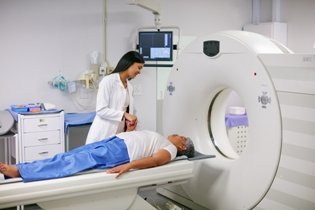MRI Scan In Nagpur
Magnetic Resonance Imaging (MRI) is a revolutionary medical imaging technique used to visualize detailed internal structures of the body. It plays a critical role in diagnosing various conditions, from neurological disorders to musculoskeletal injuries, and is known for being a non-invasive and painless procedure.

What is an MRI Scan?
An MRI scan uses strong magnetic fields and radio waves to generate detailed images of organs, tissues, bones, and other internal structures. Unlike X-rays and CT scans, MRI does not use ionizing radiation, making it a safer alternative for repeated imaging, especially in vulnerable populations such as children and pregnant women.
How MRI Works
The Science Behind MRI
- Magnetic fields: Align hydrogen protons in the body.
- Radiofrequency pulses: Disrupt this alignment.
- Sensors: Detect energy released as protons return to alignment.
- Computers: Convert this data into images.
Key Components of MRI Machines
- Magnet: The primary component (usually superconducting).
- Gradient coils: Modify magnetic fields for spatial encoding.
- RF coils: Transmit and receive radio waves.
Types of MRI Scans
Based on Imaging Area
- Brain MRI
- Spine MRI
- Knee MRI
- Abdominal MRI
- Breast MRI
- Cardiac MRI
Based on Technology
- Open MRI: For claustrophobic or obese patients.
- Closed MRI: Standard, high-resolution scanner.
- 3T MRI: High-strength magnet for clearer images.
- fMRI: Functional MRI to assess brain activity.
- MR Angiography (MRA): Focuses on blood vessels.Contact Us
Conditions Diagnosed with MRI
- Neurological disorders: Stroke, multiple sclerosis, tumors.
- Spinal issues: Disc herniation, stenosis.
- Musculoskeletal injuries: Ligament tears, fractures.
- Abdominal diseases: Liver cirrhosis, tumors.
- Cardiac conditions: Congenital heart defects, cardiomyopathies.
- Cancer: Staging, detection, and treatment response.
- Vascular problems: Aneurysms, blockages.book an appointment at Nobel Imaging and Diagnostic for a medical test
